If you only think of mushrooms as a nuisance in your garden, a sautéed side dish, or the source of a psychedelic trip, you’ve got a lot of catching up to do. There are multiple types of edible, friendly fungi that offer potent health and performance benefits—things that traditional medicine discovered years ago and modern science is just beginning to confirm. We’ve long been advocates of mushroom supplementation—specifically those classified as adaptogens—and we continue to create products that maximize their power with the fast-growing Shroom Tech (ST) family.
Consisting of ST SPORT and ST IMMUNE, the Shroom Tech collection offers support for strength, endurance, mental stress, immune health, and general nutrition.† Keep scrolling, and we’ll run you through each of these supplements and explain their use, ingredients, and the science that shows their effectiveness.
What Are Adaptogens?
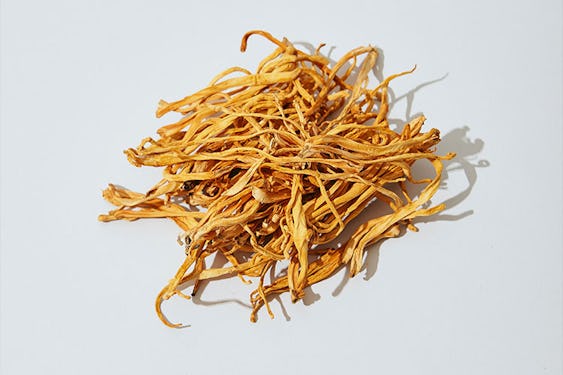
The key feature of every Shroom Tech product is its use of adaptogens—plant compounds that help regulate the body’s stress responses. Adaptogens can come from mushrooms, herbs, or roots, and many have been used for centuries in Ayurvedic and Chinese medicine.
Scientists think adaptogens work by acting on the hypothalamic-pituitary-adrenal (HPA) axis—the interaction between the brain and adrenal glands—and the sympathoadrenal system—the part of the nervous system that helps control the body’s stress response. According to an article in the journal Pharmaceuticals, adaptogens may help with attention and endurance in situations where fatigue and/or sensation of weakness might decrease performance.1 They may also help the body resist stress-induced impairments of the neuroendocrine and immune systems.
Basically, by helping to shoulder the burden that stress places on your system—be it from exercise, work, or seasonal health concerns—adaptogens allow your body to function at a higher level.
What Is Shroom Tech® SPORT?
The flagship member of the Shroom Tech family, ST SPORT is designed to be taken as a pre-workout, or for occasional energy support, and contains only trace amounts of caffeine.† It owes its power to a blend of adaptogens that includes cordyceps sinensis, a mushroom.
A double-blind, placebo-controlled study done at Florida State University found that subjects supplementing with Shroom Tech SPORT performed more volume in both their strength training and cardio workouts.†2
Shroom Tech SPORT is available in capsules.
Shroom Tech SPORT Benefits
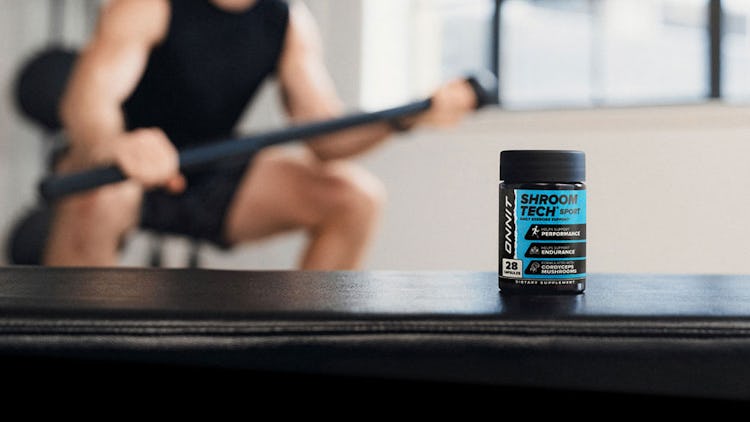
Training volume refers to the amount of work you can do in a training session. Generally speaking, the more work you’re able to perform, the more stimulus you provide to your body, driving gains in muscle, strength, endurance, or whatever other fitness quality you’re training for. Shroom Tech SPORT helps you turn up your training volume. This can mean more standing on the pedals for the mom who does spin class; more reps for the gym rat on his favorite lift; more shifts for the hockey player who used to get winded on the ice, and so on.ï¸ Podcaster and Onnit co-founder Joe Rogan has famously stated that Shroom Tech SPORT helps him squeeze in an extra roll at the end of jiu-jitsu class.†
Skeptical? Let’s examine what the Florida State study revealed.
The participants were 21 male college students averaging 22 years of age. All were experienced, recreational gym goers (read: not fitness newbies for whom any kind of training would yield results). The men were divided into two groups that were roughly equal in terms of levels of body fat, strength (as defined by their one-rep maxes—1RM—on the bench press and back squat), and VO2max (the maximum amount of oxygen consumed by the muscles during exercise—a measure of endurance).
One group of subjects supplemented with Shroom Tech SPORT and one took a placebo, and both groups strength trained and did cardio on separate days. (There were two full-body strength workouts per week and two cardio sessions consisting of high-intensity aerobic intervals.) The workouts ran for 12 weeks and were highly supervised—each subject was watched by research personnel to ensure they did all the reps in their workouts, used appropriate weights, etc.
Again, the study was double-blind. That means that the researchers who administered the capsules never knew which was Shroom Tech SPORT and which was the placebo, and the college men didn’t know which one they were getting either.
The subjects did not change their diets, and no significant differences were found between their diets. They were, however, instructed to minimize caffeine, and were not allowed any caffeine prior to exercise.
It’s important to understand that both groups did the same workout program—and it was awesome. Subjects in both the ST SPORT and placebo groups lost weight and gained strength. Their body fat percentages dropped one to two percent. As a result of doing the same effective training program, there were no significant differences between the groups in total training volume or any of the other categories. But, when looking at the numbers on a workout to workout basis, The Shroom Tech® SPORT subjects statistically (p<0.05) outperformed the placebo group by getting three more reps (28 vs. 25) on the bench press when using 72.5–77.5% of their one-rep maxes (1RM). These percentages mean loads that kept them in the 10–12-rep range. Three extra reps is a 12% increase.†
These statistical differences were repeated when looking at the bench press and the squat combined. The ST SPORT group got four more reps, total—a seven percent increase—at the same intensity (72.5–77.5%).†
Looking at the cardio, in each consecutive interval, those supplementing with Shroom Tech SPORT had a statistically significant (p<0.05) smaller drop in performance times as fatigue kicked in when running at maximal intensities. Their total running time dropped 41 seconds, or 4.1 seconds per round. This is a three percent decrease.†
The placebo group, however, dropped by two minutes and 15 seconds—an 11% decline, or 13.5 seconds at the same intensity. Ultimately, the Shroom Tech SPORT group outperformed the placebo group by 8.8% in running volume.†
The researchers concluded that ST SPORT supported training volume for strength work and high-intensity cardio at both moderate and maximum intensities, respectively.†
What Are Shroom Tech SPORT’s Key Ingredients?

Cordyceps sinensis. A mushroom popular in Traditional Chinese Medicine, cordyceps is an adaptogen that grows at high altitudes. Research indicates that cordyceps helps support energy utilization during exercise. One study in the Journal of Alternative and Complementary Medicine found that cordyceps aided exercise performance in people as old as 50–75,3 while a Japanese study showed positive effects on energy metabolism.†4
Ashwagandha. Another adaptogen, ashwagandha is an herb native to India and North Africa, and has been linked to strength, power, and endurance gains—and that may only be the beginning (although the dosages in most of its research studies are greater than what ST SPORT contains). A study in the Journal of Ayurveda and Integrative Medicine showed that ashwagandha supported improvements in VO2 max and time to exhaustion among elite cyclists.5 Another study found that the herb aided not only cardiorespiratory endurance but also quality of life, as determined by a survey that subjects took about their physical and psychological health, social relationships, and environmental factors.†6
Meanwhile, a trial in the International Journal of Ayurveda Research indicates that ashwagandha can help with speed, strength in the lower limbs, and neuromuscular coordination,7 and an Indian study on hockey players showed it was helpful with the strength and stability of their core muscles.†8
Finally, an experiment published in the Journal of the International Society of Sports Nutrition had men ages 18–50 take ashwagandha for eight weeks to supplement their weight-training.9 Their bench press and leg extension maxes shot up while they gained muscle in the chest and arms. At the same time, body fat levels dropped—more than twice what the placebo group lost—and testosterone went up.† (However, in fairness, it is unknown if ashwagandha itself is responsible for the coincidental rise in testosterone, and more research is needed to determine the connection between the herb and weight loss.)
Green tea extract. A concentrated form of decaffeinated green tea, this extract assists with endurance performance. A study in the Journal of the International Society of Sports Nutrition found that subjects taking green tea extract saw a near 11% improvement in distance covered during a cycling test.†10
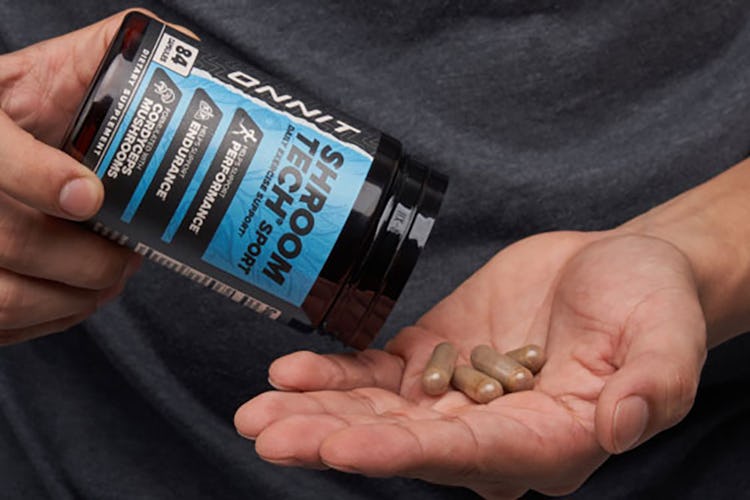
Rhodiola rosea. An herb that grows in cold, mountainous regions like cordyceps does, rhodiola is an adaptogen that promotes endurance, both physically and mentally. A study in the International Journal of Sport Nutrition and Exercise Metabolism found that rhodiola supported endurance exercise capacity in young men and women.11 The Journal of Strength and Conditioning Research also reported that rhodiola ingestion decreased heart rate during submaximal exercise, and appears to help with endurance by reducing one’s perception of effort during exercise.†12
Two studies in Phytomedicine showed rhodiola helps outside the gym. One revealed that it promotes psychomotor function in the midst of mental fatigue in students during a stressful exam period,13 while the other showed that rhodiola helped regulate fatigue in doctors working under stressful conditions during night shifts, and aided performance on work-related tasks by 20%.†14
Methyl B-12. Apart from assisting in the metabolic reactions that make you feel alert, Vitamin B12 is thought to protect the sheaths that cover nerves, so having inadequate levels is like letting the wires that run from the computer in your brain get frayed—the signals they carry won’t get relayed efficiently. Unfortunately, research shows that up to 40% of people may have B12 levels that are low or marginal—low enough for them to exhibit effects such as minor fatigue and occasional lack of focus.†15
Vitamin B12 is hardly available in plant foods, so plant-based eaters are more likely to not get enough from their diet. A 2014 review of 40 studies in the European Journal of Clinical Nutrition found that as much as 86.5% of vegetarians were at risk for deficiency. Supplementation, then, is critical.†16
Shroom Tech SPORT contains a methylated version of B12, which allows for better absorption in the body.†
Who Should Use Shroom Tech SPORT?
ST SPORT can be an effective pre-workout supplement for those who prefer a formula that is sugar-free and doesn’t contain copious amounts of caffeine. It may also benefit students, shift workers, or anyone else who burns the midnight oil and may need support for work-induced stress and minor fatigue. Unlike energy drinks or other caffeinated supplements, Shroom Tech SPORT doesn’t give you a jolt of alertness or burst of energy, but you should notice the difference in how you perform.†
What Is Shroom Tech® IMMUNE?
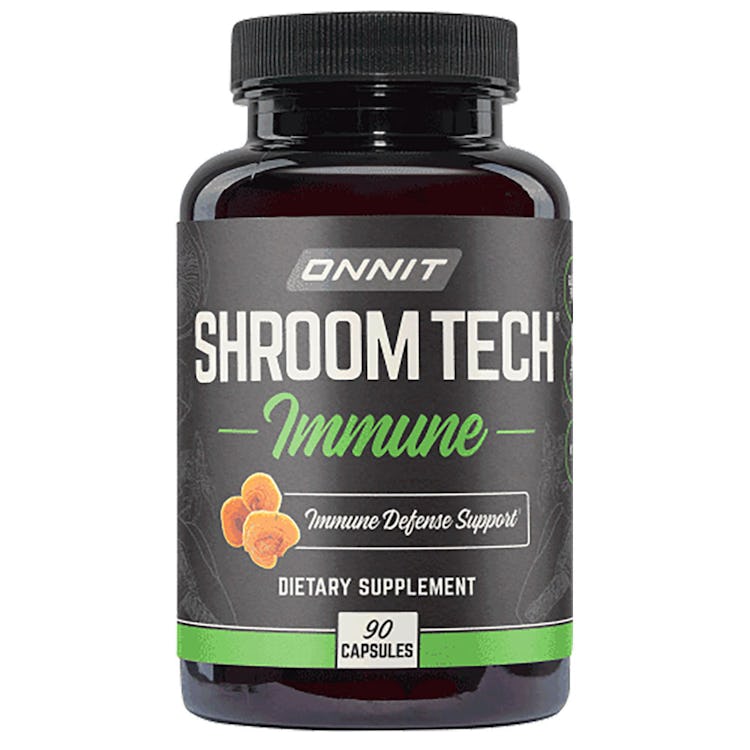
ST IMMUNE is a mushroom and whole-food blend designed to be taken daily to help the body maintain healthy immune system function. The mushrooms in this formula provide beta-glucans, a type of polysaccharide that acts as food for the good bacteria in your gut—the stuff that eats the “bad bacteria”—and also stimulates immune cell activity.†
ST IMMUNE is available in capsule form.
Shroom Tech IMMUNE Benefits
First, let’s discuss how beta-glucans work in a little more depth. Your body can’t make these compounds on its own, and it doesn’t recognize them when you ingest them. So, while they’re perfectly safe to consume, your body is cautious, and suspects beta-glucans might be dangerous. As a result, it treats them like any other outsider. Your immune system responds by ramping up the release of white blood cells—the soldiers in your body’s war against bacteria, viruses, and other pathogens. An article in Medicina explains that beta-glucans support the immune system, essentially by introducing a source of stress to your body that provokes it to become more resistant to the stressor.†17
What Are Shroom Tech IMMUNE’s Key Ingredients?
ST IMMUNE combines two ingredient blends: the Onnit Myco-Immune Blend™, which consists primarily of organic, beta-glucan containing mushrooms, and the Onnit Nutri-Immune Blend™, which provides extracts of various herbs and roots.
Onnit Myco-Immune Blend™
Organic chaga. Forming on tree bark in cold climates, chaga is an adaptogenic mushroom that has been used in traditional medicine for ages and is often consumed as a tea. A 2015 trial concluded that chaga may support the immune system.†18
Organic turkey tail (Coriolus versicolor). Consumed around the world, the mutli-colored turkey tail mushroom acts as a prebiotic, feeding the good bacteria in the gut. A study in Gut Microbes found that turkey tail helps balance the gut microbiome.†19
Organic reishi. An Asian mushroom and adaptogen that grows under hot and humid conditions, reishi was shown in a Japanese study to have a positive effect on immune health.†20
Organic shiitake. Popular in Asian cuisine, a study in the International Journal of Medicinal Mushrooms concluded that shiitake mushrooms may support the production of B cells, the ones that produce antibodies that neutralize foreign substances.†21
Onnit Nutri-Immune Blend™
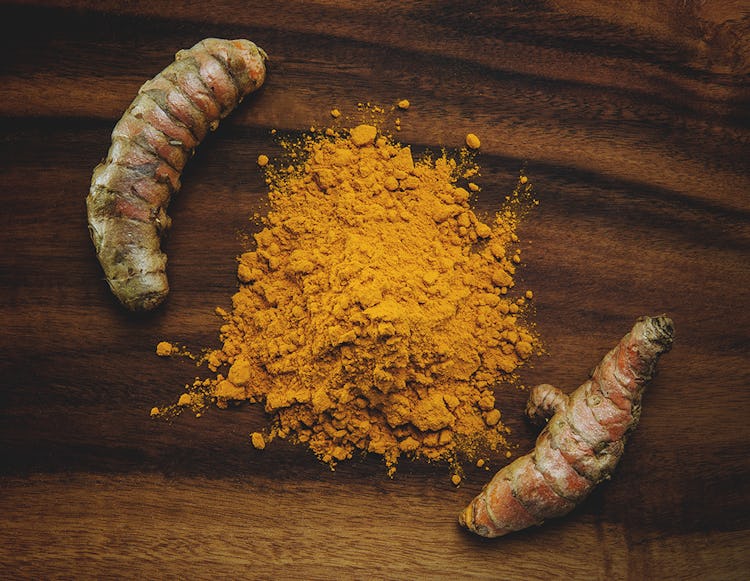
Turmeric. A plant most famous for its use in Indian curries, turmeric supplies curcumin, a compound that a review in the journal Foods determined can aid in supporting a healthy inflammatory response.22 Furthermore, the researchers stated, “A relatively low dose of the complex can provide health benefits for people that do not have diagnosed health conditions.” In other words, it’s healthy for just about anyone to supplement with turmeric. Add to that the findings of a Journal of Clinical Immunology review, which concluded that, thanks to its curcumin content, turmeric’s ability to promote immune system function is “beyond doubt.”†23
Ginger. The spicy root offers serious protection for your cells. A review in the International Journal of Preventive Medicine showed that ginger helps the body balance oxidative stress.†24
Oregano. The herb that helps give pizza its intoxicating aroma is actually pretty healthy when you take away all the fat and carbs. Research shows that it contains antioxidants, which support cells’ resilience to damage and help maintain cell integrity.†25
Who Should Use Shroom Tech IMMUNE?
ST IMMUNE can be beneficial to anyone looking to support their immune defenses, and can be taken on a daily basis. However, it shouldn’t be seen as an alternative or replacement for other powerful immune-boosting practices, such as getting consistent sleep, minimizing stress, and following a healthy diet. Smart lifestyle choices still come first.
What’s The Difference Between Shroom Tech IMMUNE? And VIRUTech® ?
Onnit currently offers two supplements that are primarily immune-system focused. Shroom Tech IMMUNE is a mushroom-based formula with botanical extracts, designed to be taken daily to maintain healthy immune system function. VIRUTech is a vitamin and mineral blend that helps support your immune system beyond what Shroom Tech IMMUNE was formulated to do alone. You should reach for VIRUTech when you are traveling, or any other occasion when you feel you need additional immune support, but make ST IMMUNE your mainstay.†
REFERENCES:
1. Panossian, Alexander, and Georg Wikman. “Effects of adaptogens on the central nervous system and the molecular mechanisms associated with their stress—protective activity.” Pharmaceuticals 3, no. 1 (2010): 188-224.
2. Vince C. Kreipke, PhD , Robert J. Moffatt, PhD , Charles J. Tanner, MA & Michael J. Ormsbee, PhD (2020): “Effects of Concurrent Training and a Multi-Ingredient Performance Supplement Containing Rhodiolarosea and Cordycepssinensis on Body Composition, Performance, and Health in Active Men,” Journal of Dietary Supplements, DOI: 10.1080/19390211.2020.1822486
3. Chen, Steve, Zhaoping Li, Robert Krochmal, Marlon Abrazado, Woosong Kim, and Christopher B. Cooper. “Effect of Cs-4®(Cordyceps sinensis) on exercise performance in healthy older subjects: a double-blind, placebo-controlled trial.” The Journal of alternative and complementary medicine 16, no. 5 (2010): 585-590.
4. Nagata, Akira, Taeko Tajima, and Masayuki Uchida. “Supplemental anti-fatigue effects of Cordyceps sinensis (Tochu-Kaso) extract powder during three stepwise exercise of human.” Japanese Journal of Physical Fitness and Sports Medicine 55, no. Supplement (2006): S145-S152.
5. Shenoy, Shweta, Udesh Chaskar, Jaspal S. Sandhu, and Madan Mohan Paadhi. “Effects of eight-week supplementation of Ashwagandha on cardiorespiratory endurance in elite Indian cyclists.” Journal of Ayurveda and integrative medicine 3, no. 4 (2012): 209.
6. Choudhary, Bakhtiar, A. Shetty, and Deepak G. Langade. “Efficacy of Ashwagandha (Withania somnifera [L.] Dunal) in improving cardiorespiratory endurance in healthy athletic adults.” Ayu 36, no. 1 (2015): 63.
7. Sandhu, Jaspal Singh, Biren Shah, Shweta Shenoy, Suresh Chauhan, G. S. Lavekar, and M. M. Padhi. “Effects of Withania somnifera (Ashwagandha) and Terminalia arjuna (Arjuna) on physical performance and cardiorespiratory endurance in healthy young adults.” International journal of Ayurveda research 1, no. 3 (2010): 144.
8. Arvind, Malik, Mehta Vikas, Malik Sonia, and Sharma Pradeep. “Effect of Ashwagandha (Withania somnifera) root powder supplementation on the core muscle strength and stability in hockey players.” International Journal of Behavioural Social and Movement Sciences 3, no. 3 (2014): 83-91.
9. Wankhede, Sachin, Deepak Langade, Kedar Joshi, Shymal R. Sinha, and Sauvik Bhattacharyya. “Examining the effect of Withania somnifera supplementation on muscle strength and recovery: a randomized controlled trial.” Journal of the International Society of Sports Nutrition 12, no. 1 (2015): 1-11.
10. Roberts, Justin D., Michael G. Roberts, Michael D. Tarpey, Jack C. Weekes, and Clare H. Thomas. “The effect of a decaffeinated green tea extract formula on fat oxidation, body composition and exercise performance.” Journal of the International Society of Sports Nutrition 12, no. 1 (2015): 1.
11. De Bock, Katrien, Bert O. Eijnde, Monique Ramaekers, and Peter Hespel. “Acute Rhodiola rosea intake can improve endurance exercise performance.” International journal of sport nutrition & exercise metabolism 14, no. 3 (2004).
12. Noreen, Eric E., James G. Buckley, Stephanie L. Lewis, Josef Brandauer, and Kristin J. Stuempfle. “The effects of an acute dose of Rhodiola rosea on endurance exercise performance.” The Journal of Strength & Conditioning Research 27, no. 3 (2013): 839-847.
13. Spasov, A. A., G. K. Wikman, V. B. Mandrikov, I. A. Mironova, and V. V. Neumoin. “A double-blind, placebo-controlled pilot study of the stimulating and adaptogenic effect of Rhodiola rosea SHR-5 extract on the fatigue of students caused by stress during an examination period with a repeated low-dose regimen.” Phytomedicine 7, no. 2 (2000): 85-89.
14. Darbinyan, V., A. Kteyan, A. Panossian, E. Gabrielian, G. Wikman, and H. Wagner. “Rhodiola rosea in stress induced fatigue—a double blind cross-over study of a standardized extract SHR-5 with a repeated low-dose regimen on the mental performance of healthy physicians during night duty.” Phytomedicine 7, no. 5 (2000): 365-371.
15. B12: National Institutes of Health, Vitamin B12 Fact Sheet for Consumers. https://ods.od.nih.gov/factsheets/vitaminb12-healthprofessional/#h5
16. Pawlak, Roman, S. E. Lester, and T. Babatunde. “The prevalence of cobalamin deficiency among vegetarians assessed by serum vitamin B12: a review of literature.” European journal of clinical nutrition 68, no. 5 (2014): 541-548.
17. Sze, Daniel Man-yuen, and Godfrey Chi-Fung Chan. “Effects of beta-glucans on different immune cell populations and cancers.” In Advances in Botanical Research, vol. 62, pp. 179-196. Academic Press, 2012.
18. GlamoÄlija, Jasmina, Ana ÄiriÄ, MiloÅ¡ NikoliÄ, ngela Fernandes, Lillian Barros, Ricardo C. Calhelha, Isabel CFR Ferreira, Marina SokoviÄ, and Leo JLD Van Griensven. “Chemical characterization and biological activity of Chaga (Inonotus obliquus), a medicinal ’mushroom’.” Journal of ethnopharmacology 162 (2015): 323-332.
19. Pallav, Kumar, Scot E. Dowd, Javier Villafuerte, Xiaotong Yang, Toufic Kabbani, Joshua Hansen, Melinda Dennis, Daniel A. Leffler, David S. Newburg, and Ciaran P. Kelly. “Effects of polysaccharopeptide from Trametes versicolor and amoxicillin on the gut microbiome of healthy volunteers: a randomized clinical trial.” Gut microbes 5, no. 4 (2014): 458-467.
20. NAJIMA, Masatomo, Mitsuhiko MUNEKATA, and Hiroyuki SASAKI. “IMPROVEMENT IN IMMUNE FUNCTION BY SUPPLEMENT CONTAINED β-GLUCANS.”
21. Gaullier, Jean-Michel, Jowita Sleboda, Erik Snorre Ofjord, Elling Ulvestad, Minna Nurminiemi, Cecilie Moe, Tor Albrektsen, and Ola Gudmundsen. “Supplementation with a soluble beta-glucan exported from Shiitake medicinal mushroom, Lentinus edodes (Berk.) singer mycelium: a crossover, placebo-controlled study in healthy elderly.” International journal of medicinal mushrooms 13, no. 4 (2011).
22. Hewlings, Susan J., and Douglas S. Kalman. “Curcumin: A review of its effects on human health.” Foods 6, no. 10 (2017): 92.
23. Jagetia, Ganesh Chandra, and Bharat B. Aggarwal. “’Spicing up’ of the immune system by curcumin.” Journal of clinical immunology 27, no. 1 (2007): 19-35.
24. Mashhadi, Nafiseh Shokri, Reza Ghiasvand, Gholamreza Askari, Mitra Hariri, Leila Darvishi, and Mohammad Reza Mofid. “Anti-oxidative and anti-inflammatory effects of ginger in health and physical activity: review of current evidence.” International journal of preventive medicine 4, no. Suppl 1 (2013): S36.
25. Lagouri, Vasiliki, and Dimitrios Boskou. “Nutrient antioxidants in oregano.” International journal of food sciences and nutrition 47, no. 6 (1996): 493-497.
26. Centers for Disease Control. “Only 1 in 10 Adults Get Enough Fruits or Vegetables.” https://www.cdc.gov/media/releases/2017/p1116-fruit-vegetable-consumption.html
27. Vigar, Vanessa, Stephen Myers, Christopher Oliver, Jacinta Arellano, Shelley Robinson, and Carlo Leifert. “A systematic review of organic versus conventional food consumption: is there a measurable benefit on human health?.” Nutrients 12, no. 1 (2019): 7.
28. Sikora, Elżbieta, and Izabela Bodziarczyk. “Composition and antioxidant activity of kale (Brassica oleracea L. var. acephala) raw and cooked.” Acta Scientiarum Polonorum Technologia Alimentaria 11, no. 3 (2012): 239-248
29. Olsen, Helle, Kjersti Aaby, and Grethe Iren A. Borge. “Characterization and quantification of flavonoids and hydroxycinnamic acids in curly kale (Brassica oleracea L. convar. acephala var. sabellica) by HPLC-DAD-ESI-MS n.” Journal of agricultural and food chemistry 57, no. 7 (2009): 2816-2825.
30. Gale, Catharine R., Nigel F. Hall, David IW Phillips, and Christopher N. Martyn. “Lutein and zeaxanthin status and risk of age-related macular degeneration.” Investigative ophthalmology & visual science 44, no. 6 (2003): 2461-2465.
31. Conzatti, Adriana, Fernanda Carolina Telles da Silva Fróes, Ingrid Dalira Schweigert Perry, and Carolina Guerini de Souza. “Clinical and molecular evidence of the consumption of broccoli, glucoraphanin and sulforaphane in humans.” Nutrición hospitalaria 31, no. 2 (2015): 559-569.
32. Lu, Hsueh-Kuan, Chin-Cheng Hsieh, Jen-Jung Hsu, Yuh-Kuan Yang, and Hong-Nong Chou. “Preventive effects of Spirulina platensis on skeletal muscle damage under exercise-induced oxidative stress.” European journal of applied physiology 98, no. 2 (2006): 220-226.
33. Torres-Duran, Patricia V., Aldo Ferreira-Hermosillo, and Marco A. Juarez-Oropeza. “Antihyperlipemic and antihypertensive effects of Spirulina maxima in an open sample of Mexican population: a preliminary report.” Lipids in Health and Disease 6, no. 1 (2007): 1-8.
34. Cingi, Cemal, Meltem Conk-Dalay, Hamdi Cakli, and Cengiz Bal. “The effects of spirulina on allergic rhinitis.” European Archives of Oto-Rhino-Laryngology 265, no. 10 (2008): 1219-1223.
35. Mori, Koichiro, Satoshi Inatomi, Kenzi Ouchi, Yoshihito Azumi, and Takashi Tuchida. “Improving effects of the mushroom Yamabushitake (Hericium erinaceus) on mild cognitive impairment: A doubleblind placebocontrolled clinical trial.” Phytotherapy Research: An International Journal Devoted to Pharmacological and Toxicological Evaluation of Natural Product Derivatives 23, no. 3 (2009): 367-372.
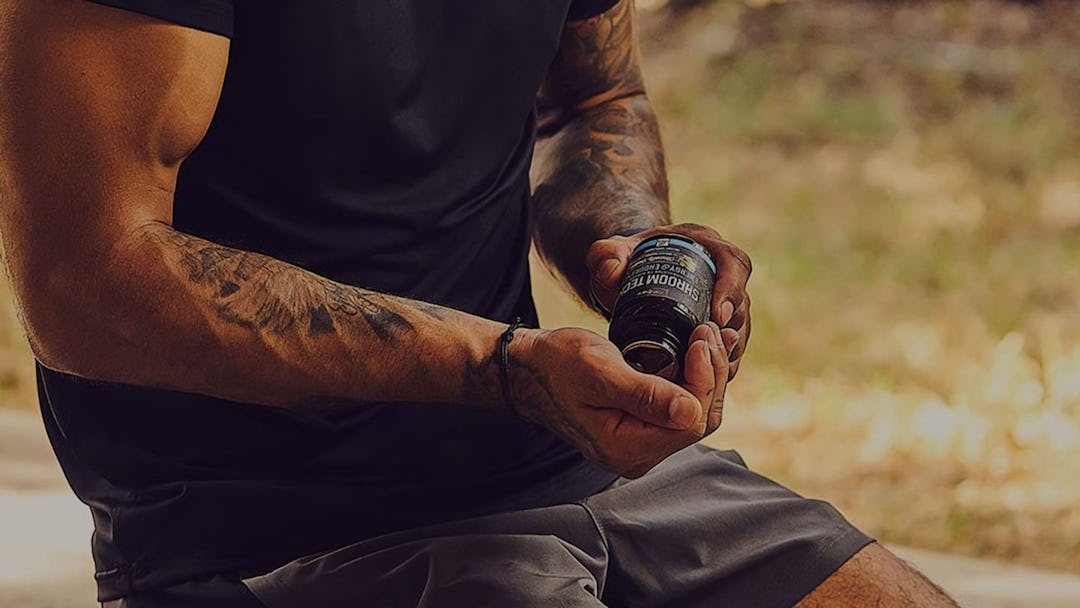
)





